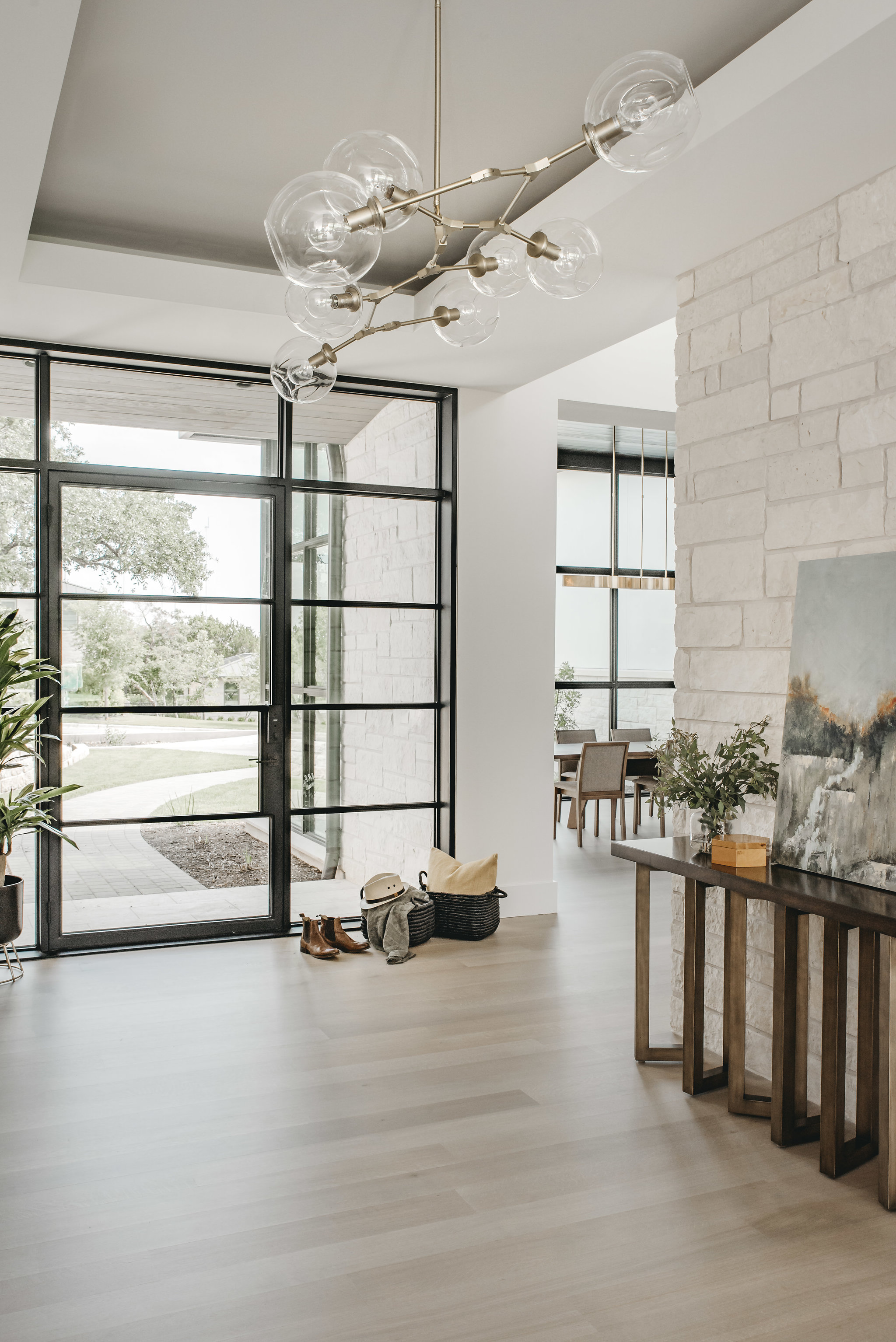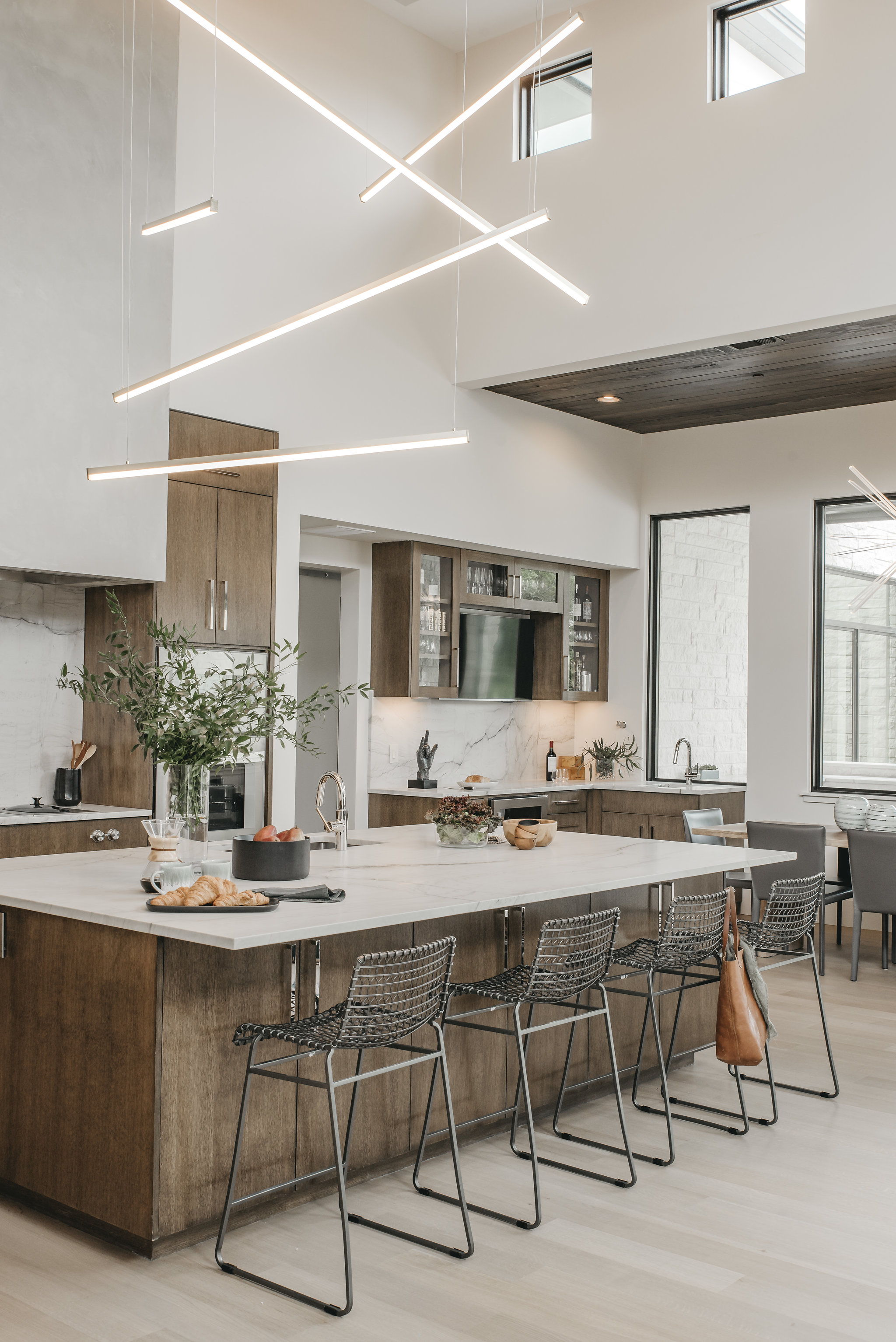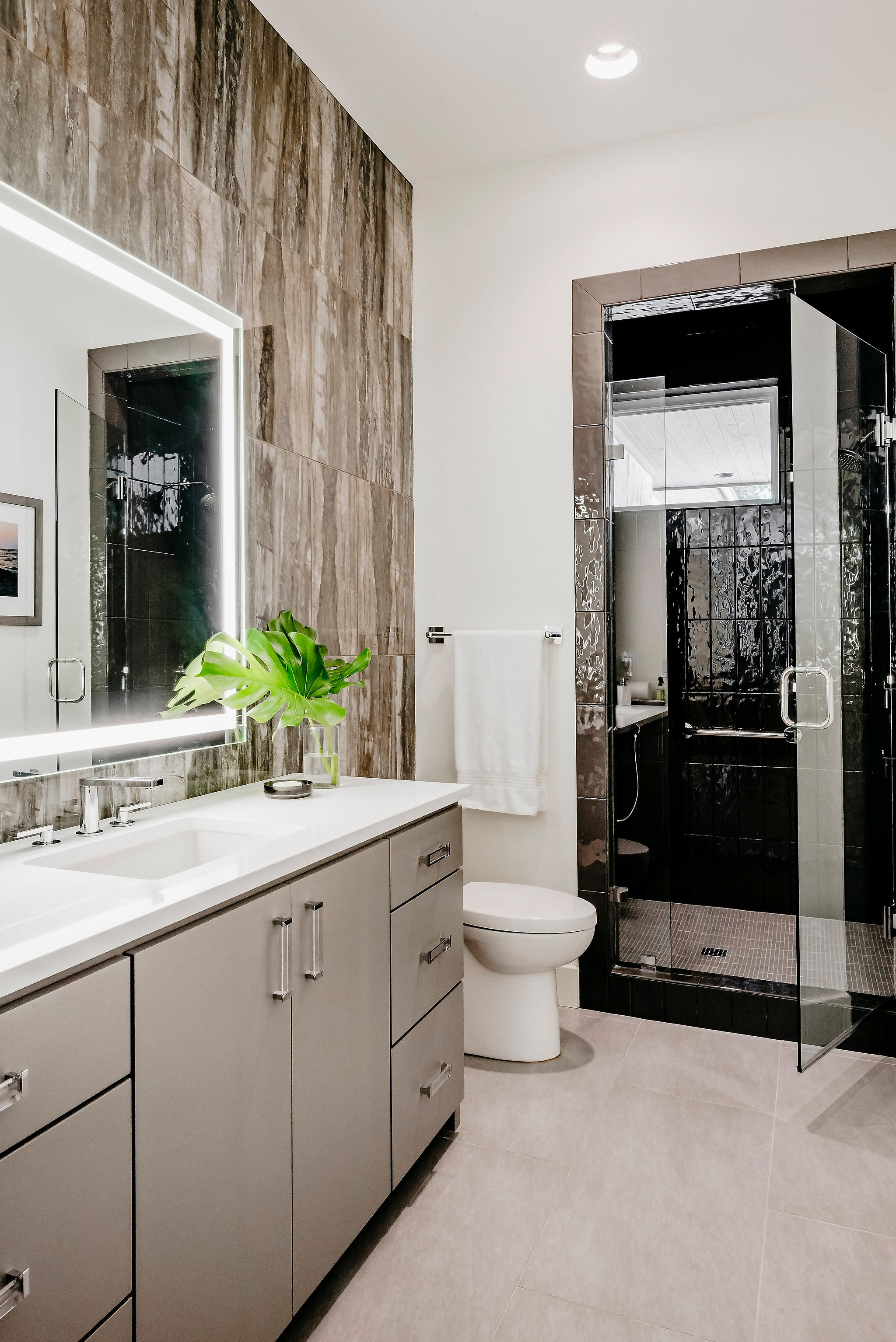The sleek profile of these round pendants is made possible with the thin form factor of LED lighting. Photo by An Indoor Lady.
There have been dramatic advancements recently in the world of lighting, namely in the form of LED. But with new choices comes added complexity. Gone are the days of simply going to the lighting showroom and picking pretty fixtures, and in fact as technology progresses, I see more and more clients becoming confused, making mistakes, and missing opportunities for a fabulous result. I’d like to help clarify what’s important in lighting selections, and boil it down to some key considerations.
ADVANTAGES OF LED
Rather than bore you with the details of lighting technology, let’s review a summary of the advantages of LED over historic technologies. First of all, LED bulbs are made with semiconductors rather than inert gas and mercury (okay I’m sorry – I said I wouldn’t bore you). It’s an important distinction though, because it means they don’t really “burn out”, but rather fade ever so slightly over the course of 30 years. This is a very practical advantage in hard-to-reach places (think about the hassle of changing light bulbs in 20 foot ceilings!). The initial cost is still a bit higher than with other bulbs, but the long term gain pays off. Also, because semiconductors have such a small form factor, it enables the tiniest of applications and shapes. This is a key differentiator. You have probably heard of LED tape, which offers the opportunity for accent lighting in the sneakiest of places such as under shelves and inside book cases. Recently I’ve even noticed a variety of new shapes in the realm of decorative fixtures. You’ll see some that look like raindrops, or grids of light dots, or as someone commented on one of my Instagram images: “floating Star Wars light sabers” (which certainly appeals to my husband and kids!). This is all enabled by LED technology.
Our client for this project above considered lighting to be like fine jewelry, and each LED fixture has a unique personality and shape (Builder - Enve Builders, Architect - Vanguard Studio, Photographer - An Indoor Lady. The fixtures were purchased through Lightology).
MISTAKES TO AVOID
So where can you go wrong? The key mistake I see from consumers is not paying attention to the details. Terminology has changed, so the features and considerations are different. For example, light output is no longer described in watts, but in lumens, so you’ll have to think of it differently than you did a 60w versus 100w bulb (most labels offer a comparison chart). Also, not all LEDs have the range of dimmability that we are used to, so if that is important to you, be sure to ask questions of your lighting expert. Last but not least, the LED characteristic I’ve seen throwing most people off is color temperature. This refers to whether the light is a “cool”, or bluish tone, versus a “warm” or more yellow tone. We didn’t have such choices with old school incandescent bulbs, which were traditionally more yellow. Daylight has a cooler undertone, so that is my personal preference. The scale ranges from 2700K (warmest) – 6500K (coolest), and my ‘go-to’ tends to be 3000K, although I’ve had clients who liked 4000K. My advice is to pay attention to these details, so that if you swap out bulbs in one room, you don’t later buy a different color temperature in another room and create a strange affect from one room to the next. I’ve even seen houses where they replaced a single light bulb on an exterior sconce, only to find it doesn’t match any of the others (yes, that’s right, I am the person who notices these things as I drive down the street!).
Our clients above preferred to use light as an accent rather than a decorative feature. Note the light channel above the fireplace and the LED lighting INSIDE the mirror at right in place of a vanity sconce (Builder - Enve Builders, Architect - Geschke Group, Photography - An Indoor Lady)
BOILING IT DOWN
In summary, LED is a fabulous technology advancement and it’s where the industry is headed, so it’s time to embrace it and look at lighting with a fresh perspective. To prepare yourself before shopping for fixtures or bulbs, think not only about location (i.e. places where changing the bulb is inconvenient), but light output, dimmability, and now color of light. Don’t be turned away by the initial price tag of LED, but instead think carefully about the uses of your purchase. If you are remodeling, take advantage of clever new ways to accentuate a nice feature. And even if you are just replacing one or two bulbs, think holistically about your longer term lighting plan. It will help you avoid the common mistakes and be happier with your end result.











